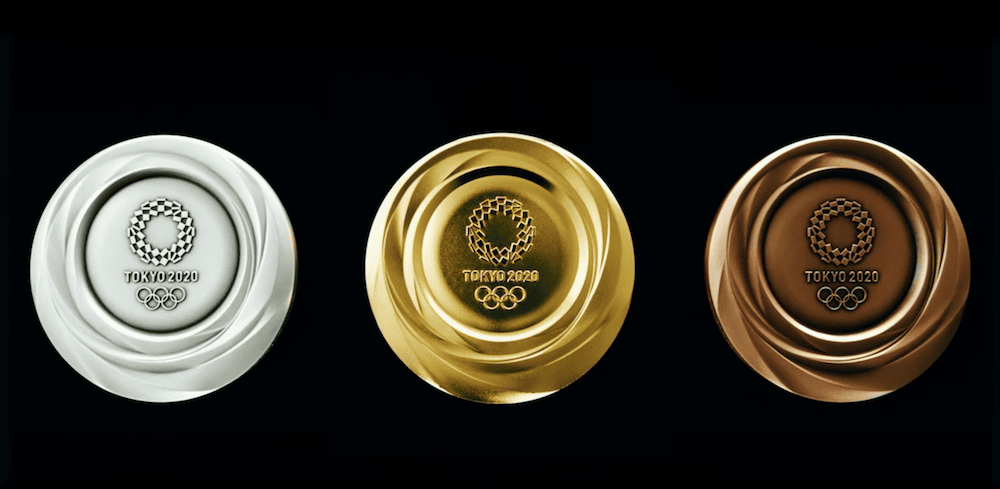
[Image above] How does one create 5,000 medals? It only takes recycling 80,000 tons of e-waste. Credit: Tokyo 2020, YouTube
When countries prepare to host the Olympic Games, many people look forward to seeing the impressive venues created for events. Yet there is another iconic item specially designed by each host country to keep an eye out for as well—the Olympic medals.
Ever since gold, silver, and bronze medals were awarded to first, second, and third place, respectively, at the 1904 Olympic Games in St. Louis, Olympic medals have become a paradigmatic symbol of victory. Compared to Winter Games medals, which have a more freestyle layout, Summer Games medals tend to lean on a classical design, which features the Greek goddess of victory Nike displayed prominently on the front.
On first look, the medals Japan revealed last week for the 2020 Summer Games in Tokyo look like traditional Olympic medals. But the story behind how these approximately 5,000 medals were made highlights Japan’s central tenet for the 2020 Tokyo Olympics—sustainability.
For years researchers have debated the unstainable economics of the Olympics, and recently the International Olympic Committee (IOC) took steps toward “greening” the Games. Although it is unknown at this point if the IOC’s initiatives will have lasting effects, Japan is aiming to make Tokyo 2020 an example.
In preparation for the Games, Japan released a Games Sustainability Plan with the slogan “Be better, together—For the planet and the people.” A large part of the plan rests on recycling materials whenever possible, such as making uniforms from recycled clothing.
Recycling materials is what makes the Tokyo 2020 medals so special. The metals that make up these approximately 5,000 medals come from nearly 80,000 tons of recycled electronic gadgets!
As reported on the Tokyo 2020 website, municipal authorities across Japan collected 78,985 tons of electronics during April 2017–March 2019, a total that includes 6.21 million used mobile phones. From these devices they extracted about 32 kg (70.5 lbs) of gold, 3,500 kg (7,716 lbs) of silver, and 2,200 kg (4,850 lbs) of bronze.
Electronic devices are a cocktail of elements, as a CTT video from March shows. Extracting metals from e-waste is an important step toward achieving environmental sustainability.
However, recycling is not the end-all answer. Reusing items also plays a role in sustainability, which is why the Tokyo 2020 sustainability plan stipulates existing venues be used when possible rather than creating new.
In the video below, take a first look at the Tokyo 2020 Olympic medals. Only 358 days to go!

Credit: Tokyo 2020, YouTube
Author
Lisa McDonald
CTT Categories
- Environment


